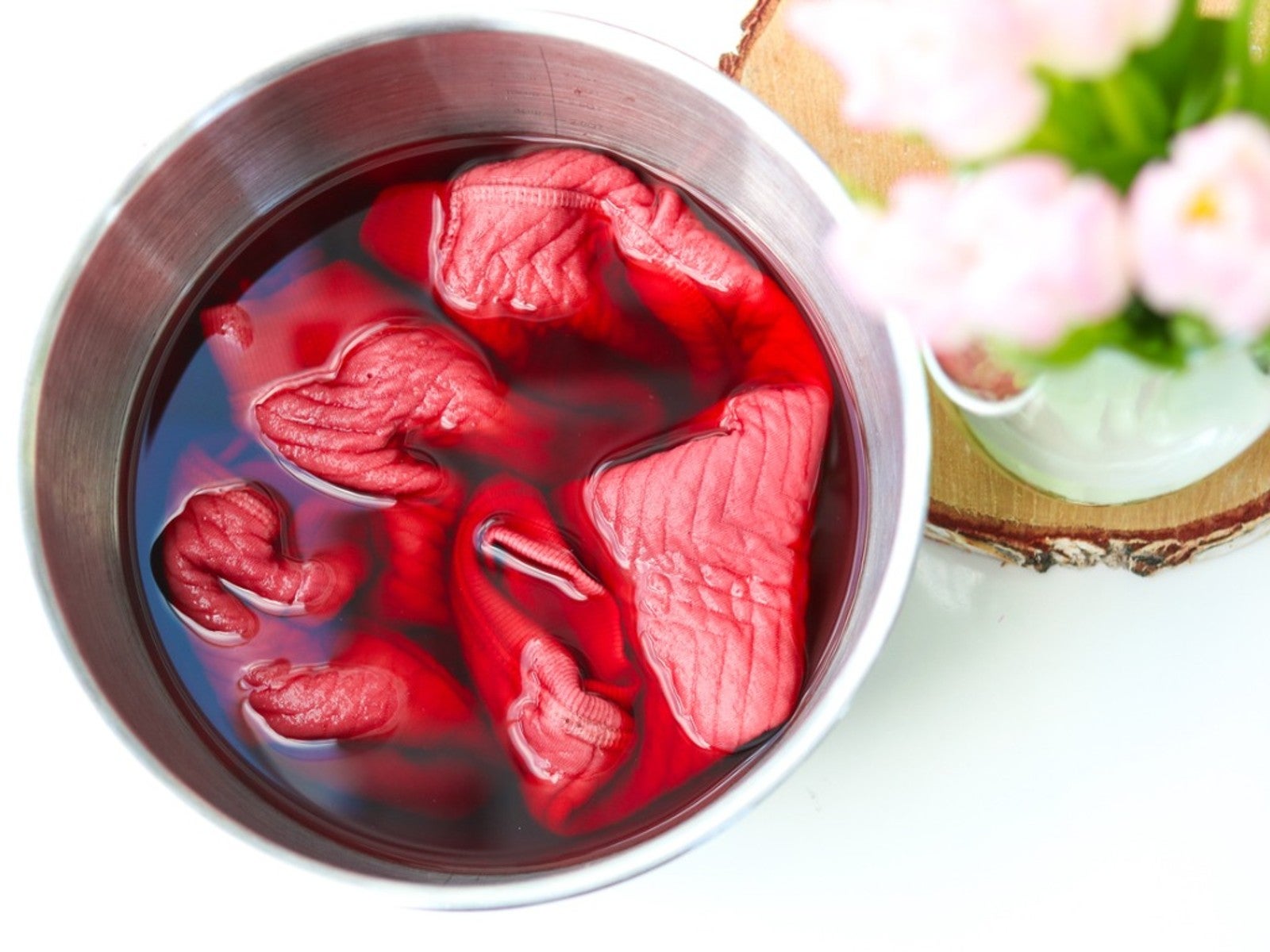DIY Natural Pink Beet Dye - Using Beets To Dye Clothes, Easter Eggs And Food

If you have ever prepped beets, you will be familiar with the root's propensity towards staining. The brilliant red juice is then an obvious choice for a natural beet dye. For hundreds of years, people have been using botanical sourced dyes, well before the FDA approved red dye 40.
About Beet Juice Dye
The brilliant red of beets is the result of betalains, rich in antioxidants, high in fiber, low calorie and teeming with vitamins and minerals. Those who have prepared beets know that beet juice can and will stain anything it comes into contact with, which makes one wonder about dyeing with beet juice. Beet juice dye isn’t anything new. People have been using beets (and other veggies) to dye fabric for centuries. Keep reading to learn how to make dye with beets for fabric, food and more.
How to Make Dye with Beets
Making beet dye for use in foods is quite simple. Things get a bit more complex when using beets to dye fabric, simply because a mordant or color fixative needs to be added. Neither is particularly complex, but remember that dyeing with beet juice and the making of beet dye are inherently messy. Make sure to wear gloves and clothing you don’t mind getting stained, and to use metal pots to cook the beet dye in.
Beet dye can be used to dye foods such as frostings, or used to dye eggs. To make beet dye for foods, simply wash the beets and then grate them. Protect the table surface with towels, or grate on a plate or use a food processor. A single beet should yield about 3 Tbsp (45 ml.) of beet juice dye.
Once the beets are grated, squeeze the juice into whatever mixture it is you are dyeing, using cheesecloth or an old dish towel to squeeze the juice out. The more juice added, the deeper the hue.
Using Beets to Dye Fabric
Beet juice dye can be used to dye cotton or wool. You could just use the above method to make beet dye, but the resulting fabric will have a tendency to run and should always be hand washed separately lest you end up with a pink load of laundry.
Traditionally an inorganic oxide such as copper, tin or aluminum was used to fix the colorant, but since most of us don’t have any of that lying around, other mordant options are vinegar or salt.
Gardening tips, videos, info and more delivered right to your inbox!
Sign up for the Gardening Know How newsletter today and receive a free copy of our e-book "How to Grow Delicious Tomatoes".
Prepare your beet dye as above or cook down beets in water until the desired hue is reached and then strain the solids, reserving the liquid beet dye.
In a large metal cooking pot add water, beet dye, and your mordant of 2-3 Tbsp (30-44 ml) either white vinegar or salt. The amount of dye used is dependent upon the shade of red you wish to achieve. Bring the entirety to a simmer for about half an hour.
After 30 minutes have passed, you can add the fabric directly into the hot water to dye it, or cool the concoction and dye at a later date. Wet the fabric first and then stir the garment around in the mixture to ensure even coloration, or use rubber bands, clothespins or even tape to create patterns in the material.
When you are satisfied with the color, remove the fabric and allow it to dry thoroughly. Iron on high heat to set the color.

Amy Grant has been gardening for 30 years and writing for 15. A professional chef and caterer, Amy's area of expertise is culinary gardening.
-
 Zinnias On Repeat: 10 Glorious Cut-And-Come-Again Varieties For Endless Summer Bouquets
Zinnias On Repeat: 10 Glorious Cut-And-Come-Again Varieties For Endless Summer BouquetsThese zinnia varieties keep giving all summer, making them the perfect choice for dedicated cutting gardens – or just the occasional homegrown bouquet.
By Ellen Wells
-
 Create A Romantic Garden Straight Out Of Bridgerton: Regency Era Romance In Your Garden
Create A Romantic Garden Straight Out Of Bridgerton: Regency Era Romance In Your GardenTry some romantic garden ideas straight out of Bridgerton. Flowers and gardens in the Regency era were lush and charming and you can get the same look!
By Bonnie L. Grant